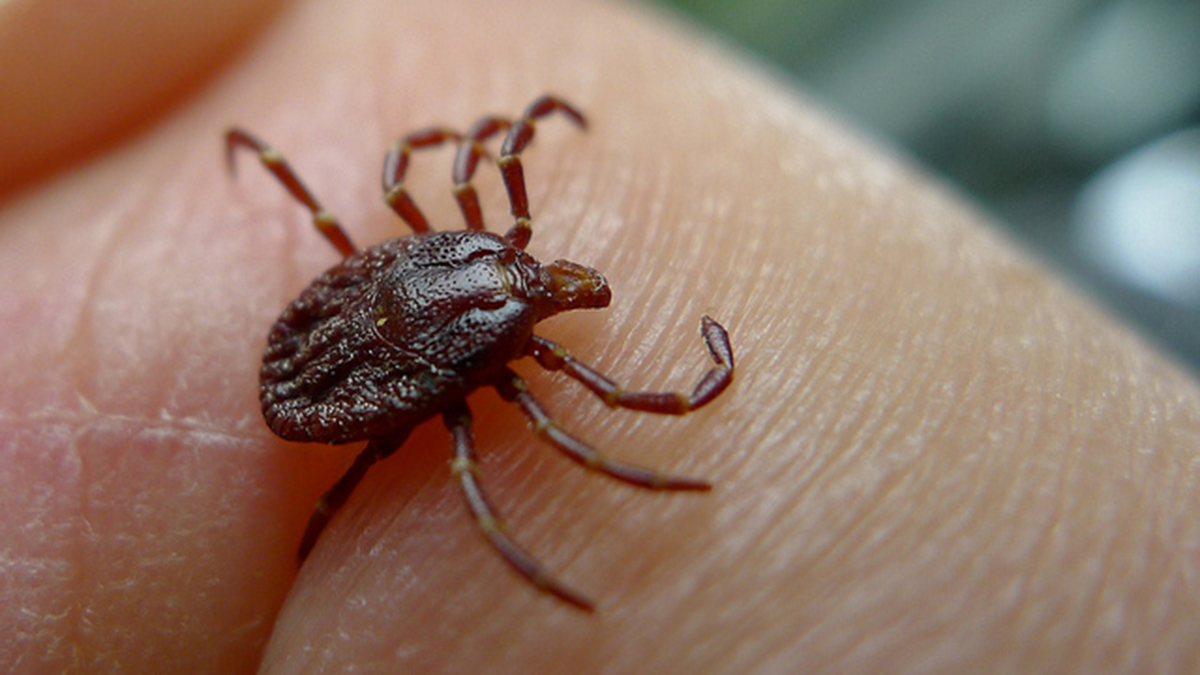Table of Contents
This new disease, similar to Lyme disease, also causes chronic muscle pain, fatigue, and headache, but is much less responsive to antibiotic treatment. Having shown up in the United States in 2013, it spread to the United Kingdom in 2015.
Borrelia miyamotoi disease (BMD) is a tick-borne infection that can cause even more severe symptoms than Lyme disease. BMD is also much harder to prevent and much harder to treat.
Lyme disease is spread by adult female blacklegged ticks that grow to about 1/4 inch (3 mm) wide and up to 1/2 inch (6 mm) long. An adult female tick has a red tail (the "red worm" described by the eighteenth century doctor). This red tail is opposite the mouth of the tick, which is attached to the skin. Adult male blacklegged ticks are about half as big, and don't have red hind parts. Adult ticks have a dark brown exoskeleton that makes them relatively easy to see on skin.
BMD is spread by unfed tick larvae that are less than 1/10 of an inch (about 1 mm) long. These immature ticks do not have a dark exoskeleton, and are much more difficult to identify, especially on white skin. Because larvae survive into the fall and winter months, they not only are less noticeable, they may appear outside of the usual "tick season." The larvae may attach themselves to the skin of hikers out to enjoy beautiful autumn scenes or taking shelter in wooded areas during a sudden snow squall. Most cases of BMD occur during the Northern Hemisphere summer months of July and August, but the infection can occur any time of year.

The symptoms caused by BMD are much more severe than those caused by Lyme disease. Among BMD patients in the United States, about 50 percent are suffering a potentially fatal condition called septic shock during their first visit with the doctor. BMD can also cause encephalitis, inflammation of the brain. A combination of intravenous antibiotics that have to be administered in the hospital often resolves symptoms, but the IV's may have to be administered around the clock for as long as two weeks.
BMD was first reported in Russia in 2011. It appeared in the US in 2013. In 2015, the organism that causes the infection was found in ticks in the UK and all over Europe, from Hungary to Norway.
Wherever there is a risk of Lyme disease, there is now a risk of BMD. What can you do to protect yourself?
The answer is not to stay inside and watch TV. You can still enjoy all your regular outdoor activities. Here are some practical ways to avoid ticks:
- Wear white clothing in summer so you can more easily see adult ticks, but darker clothing in fall and early winter so you can more easily see tick larvae.
- Wear long pants, tucked into your socks.
- Wear long-sleeved shirts or blouses that are tight around the wrists.
- Keep your pets tick-free.
- Perform daily inspections of your skin, especially in hairy areas.
- Keep brush and piles of leaves away from your home and yard.
- Don't sit on wood piles.
- Avoid walking through high grass.
- Maintain your vitamin D levels, through supplementation if necessary. Vitamin D helps your body fight tick-borne infections.
- Kelly J. Widespread Borrelia miyamotoi Tick-borne Fever Found in US. Medscape Medical News. 12 June 2015.
- Molloy PJ, Telford SR 3rd, Chowdri HR, Lepore TJ, Gugliotta JL, Weeks KE, Hewins ME, Goethert HK, Berardi VP. Borrelia miyamotoi Disease in the Northeastern United States: A Case Series. Ann Intern Med. 2015 Jul 21. 163(2):91-8. doi: 10.7326/M15-0333.
- PMID: 26053877.
- Photo courtesy of fairfaxcounty: https://www.flickr.com/photos/fairfaxcounty/7209178448/
- Photo courtesy of John Tann: www.flickr.com/photos/31031835@N08/6368335425/

